By Penny Pawl, UC Master Gardener of Napa County
Someone once asked me if it was possible to grow a camellia from seed. Yes, it is possible, but seldom will it have the same flowers as the parent.
A neighbor of mine had a wonderful camellia with a beautiful flower. He kept taking the seeds and sprouting them. I have four bushes from these sprouts, and they are happy and healthy, but the flowers are plain. I call them “my Watsons” after my neighbor.
Many years ago, on a trip to the East Coast, I went to Charleston to see the oldest camellia plantation and the oldest camellia in the United States. Camellias arrived in Charleston in 1786. When I visited, the plant had seed pods on it and somehow one of the pods jumped into my pocket. I planted the seeds and one plant grew. It has since become a beautiful bonsai. But does it bloom? While pruning, I once saw evidence of a couple of blooms but never saw an actual flower. And I would expect any flowers to be plain.
The camellias available in nurseries are hybrids. The number of named camellias is around 20,000. The International Camellia Society published a registry of names, a project that required more than 30 years of research. I did not know that the tea plant (Camellia sinensis), which provides the leaves that people around the world brew daily, is a member of this family.
The most common species, Camellia japonica, was imported to England in the early 1700s and grown in a greenhouse. Our garden camellias belong to this species. Over time, these plants have been hybridized to produce a wide variety of blooms. Hybrids can only be reproduced by cuttings, not by seed.
Camellia japonica bushes bloom in the late winter and early spring. If you want to choose a camellia based on its flower, that's the time to go shopping. One of the biggest camellia shows is in Sacramento each March.
Once a camellia has finished blooming it needs pruning. You can trim quite severely and not affect next year's bloom. The buds for the following winter's bloom form as the plant produces new growth. If you prune after the buds have formed, you will not have any bloom the following winter.
Once established, camellias are fairly drought tolerant. Some of mine get watered only by rain and that does not seem to hurt the bloom. All of these camellias are over 40 years old and well established. Newer plantings need water year-round until they are established.
When selecting a place in your garden to plant a camellia, choose a location that gets dappled sunlight or shade. Plant the camellia a bit higher than the surrounding soil so that any excess water will flow away from the trunk.
Fallen camellia blossoms lying on the ground beneath the bush can cause a fungal disease called camellia flower blight. The disease causes the blooms to have brown petals that fall off. Pick up dead flowers under your bush to foil this disease. Most of the other diseases that plague camellias occur in damp, humid climates and are rarely a problem in Napa Valley.
Napa Library Talks: First Thursday of each month. Register to get Zoom link. Thursday, January 7: Bare Root Basics.
Free Rose Pruning and Winter Care Workshop: Saturday, January 9. Register for the Zoom link.
Got Garden Questions? Contact our Help Desk. The team is working remotely so please submit your questions through our diagnosis form, sending any photos to mastergardeners@countyofnapa.org or leave a detailed message at 707- 253-4143. A Master Gardener will get back to you by phone or email.
For more information visit http://napamg.ucanr.edu or find us on Facebook or Instagram, UC Master Gardeners of Napa County.
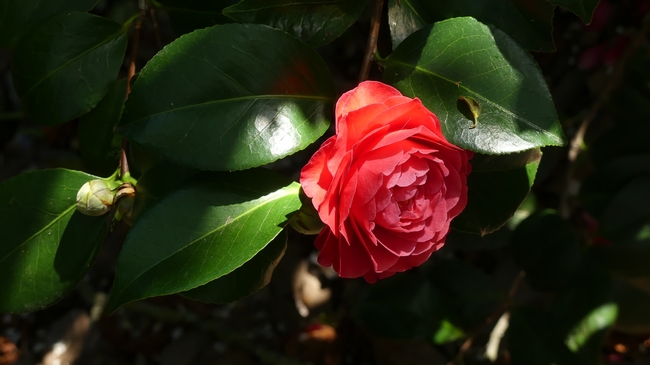
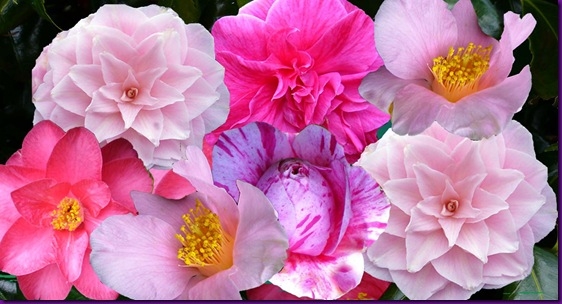
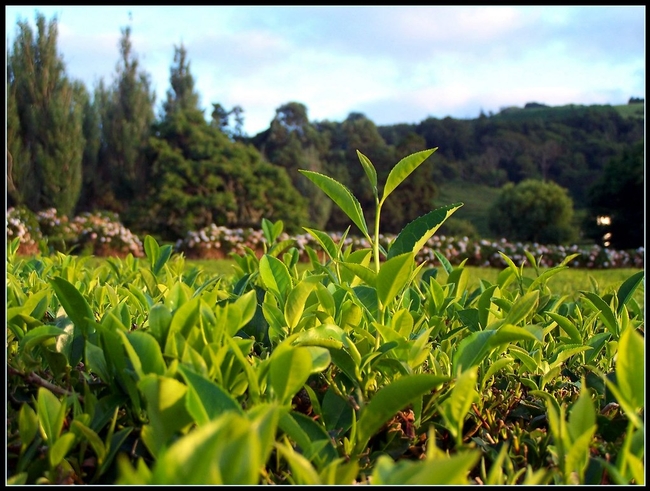
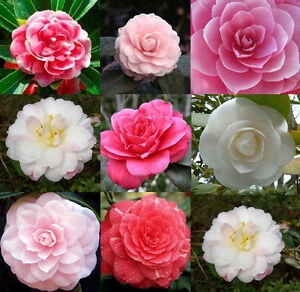
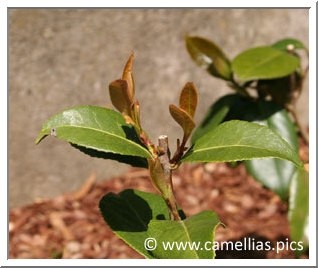
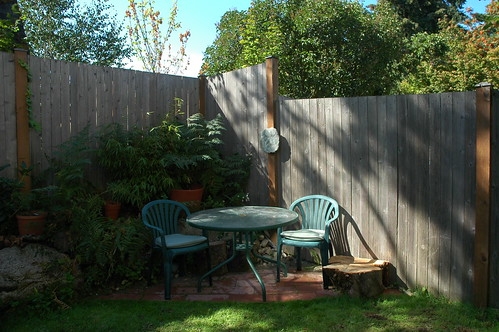
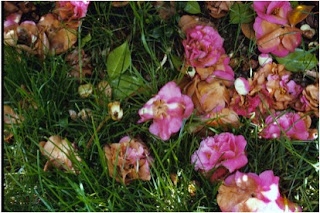
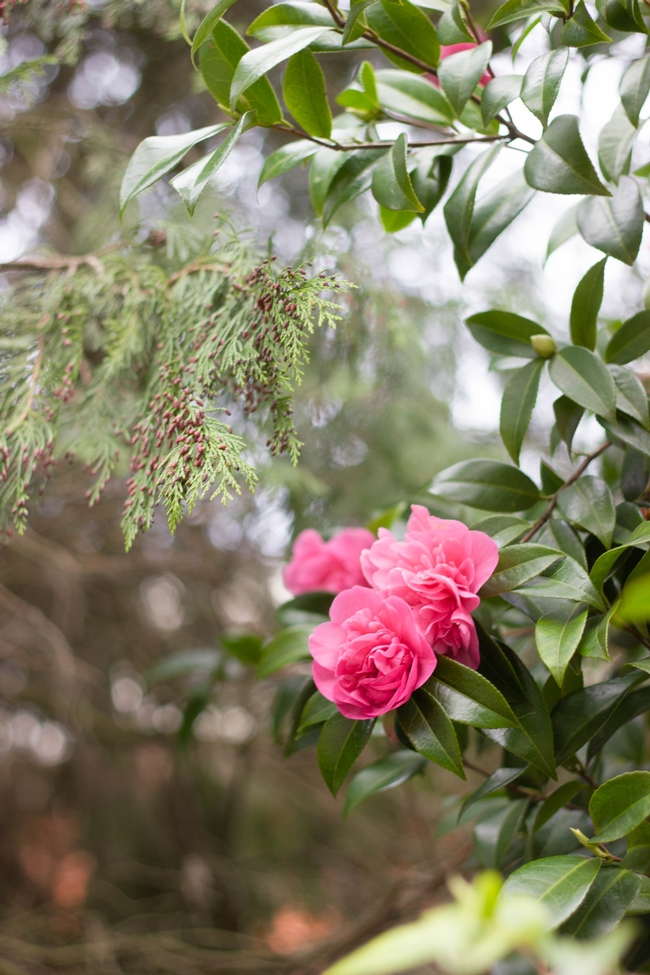

In my yard, a few violas and the camellias, with their thick, shiny green leaves, grew as usual, as if there had been no change from our usual moderate winter weather. Years ago, during a long summer drought, I noticed the same thing. All around my property, plants were dying of thirst while the camellias remained unaffected.
This year, the sasanqua camellia ‘White Doves’ warmed my heart with masses of double blooms while my dog’s water dish was solid ice. These are tough plants.
They have withstood all kinds of extreme weather for centuries and revealed their versatility over time. Shoots and leaves have been used for teas, while seeds and nuts were used to make cosmetics and oils for cooking and heating.
Many of the original small, white species camellias were fragrant. The species C. lutchuensis is mainly used for hybridizing to create more fragrant camellias.
Camellias have five different flower forms: single petals, semi-double, formal double, anemone and peony form. They may be tough plants, but many of the petals appear to be as fragile as the finest china.
Because the Napa Valley Camellia Society’s annual show is early this year, on February1, I was concerned about the status of available flowers. I called avid camellia grower, Peggy Aaron, and mentioned that my camellias were noticeably smaller than usual. She said that some of hers were also smaller but felt confident that there would be an abundance of beautiful blooms for the show.
According to the commercial camellia growers at Nuccio’s Nurseries in Altadena, a mature flower is 90 percent water. So when a plant dries out, the result may be undersized blooms and sometimes bud drop. Our prolonged freezing temperatures in December produced a drying effect that caused the puny flowers.
But I also have more blossoms on my bushesthis year and they are remaining longer than usual. That’s a good thing. These plants want to bloom no matter what the weather gives us.
In addition to coming in a variety of forms and colors, camellias may be low, medium or tall, upright or arching. Some are useful for informal hedges; others make good ground covers or small trees. They may provide focal points in containers ora handsome espalier against a fence. Valued for their tiny leaves, the species and sasanqua types show well in the art of bonsai.
I usually look for camellias with unusual petals or fragrance that attracts honeybees. If you use camellias as an informal hedge, note that pruning with electric shears will displace birds’ nests, cut out much of the flowering and expose old wood. Prune lightly to shape only about every five years.
Camellias have few needs. Digging around them disturbs tiny feeder roots. Give them a mulch of peat moss or leaf mold, light-weight materials that allow air to reach and protect the roots.
Camellias appreciate fertilizer as soon as there are signs of growth. But if you forget to fertilize, no problem. Camellias don’t like to be over fed. Use a fertilizer formulated for camellias and follow the directions on the container.
Camellia blight is more prevalent during wet winters. This fungal disease is caused by spores released by splashing water. Remove damaged flowers and keep the ground beneath the plant clean. In general, camellias like well-drained, slightly acid soil and protection from hot afternoon sun. They make excellent understory plants and grow well beneath redwood trees.
The annual Napa Valley Camellia Society show is a perfect place to learn more about camellias. The growers are more than happy to help you choose the right plants for your garden, and there will be plants for sale at nominal prices. If you choose wisely, you will have flowers for years to come that will bloom from October until April.
I’ll see you on Saturday, February 1, at the Napa Senior Center. Leave those winter doldrums at home and enjoy all the magnificent color. Admission is free and you may find a treasure for your garden.
Workshop: Napa County Master Gardeners will host a workshop on “Success with Veggies All Year Long,” on Sunday, February 2, from 2 p.m. to 4 p.m., at the Yountville Community Center, 6516 Washington Street, Yountville. Learn how to keep your garden soil healthy and productive, find out which vegetables to plant in what months, and be introduced to many reliable resources. To register, call the Parks & Recreation Department at 707-944-8712 or visit their web site.
Napa County Master Gardeners welcome the public to visit their demonstration garden at Connolly Ranch on Thursdays, from 10:00 a.m. until noon, except the last Thursday of the month. Connolly Ranch is at 3141 Browns Valley Road at Thompson Avenue in Napa. Enter on Thompson Avenue.
Master Gardeners are volunteers who help the University of California reach the gardening public with home gardening information. Napa County Master Gardeners ( http://ucanr.org/ucmgnapa/) are available to answer gardening questions in person or by phone, Monday, Wednesday and Friday, 9 a.m. to Noon, at the U. C. Cooperative Extension office, 1710 Soscol Avenue, Suite 4, Napa, 707-253-4143, or from outside City of Napa toll-free at 877-279-3065. Or e-mail your garden questions by following the guidelines on our web site. Click on Napa, then on Have Garden Questions? Find us on Facebook under UC Master Gardeners of Napa County.

